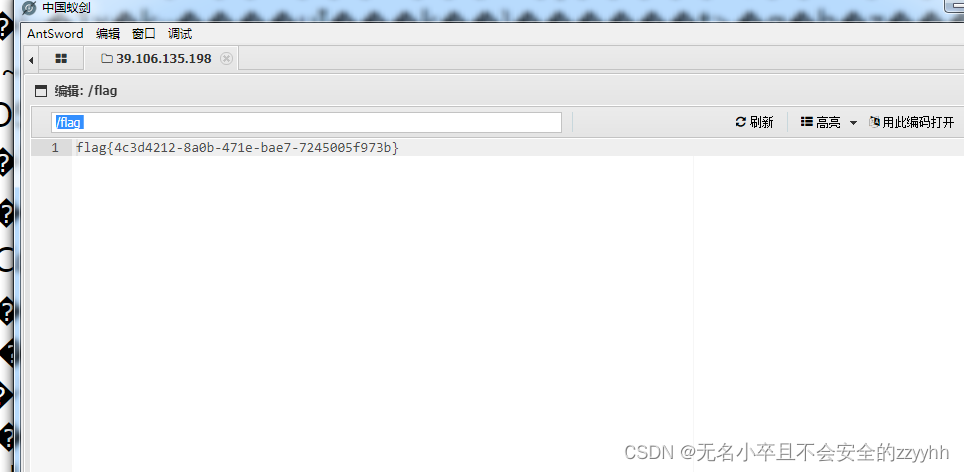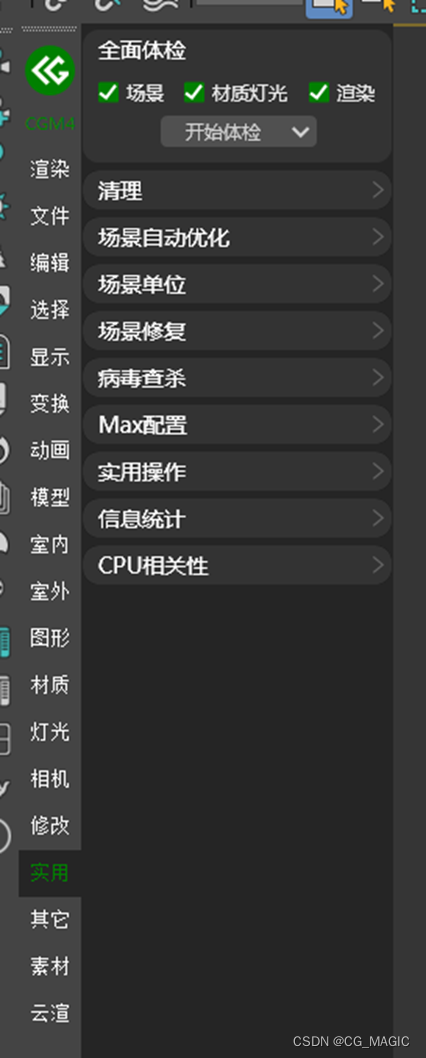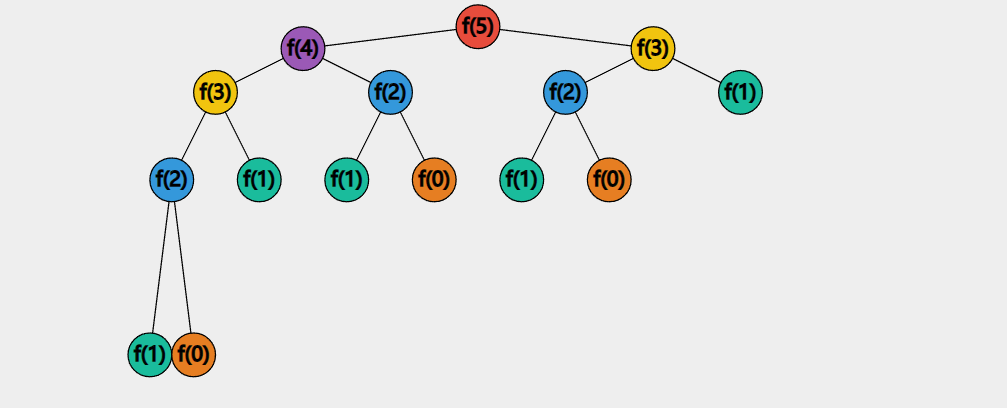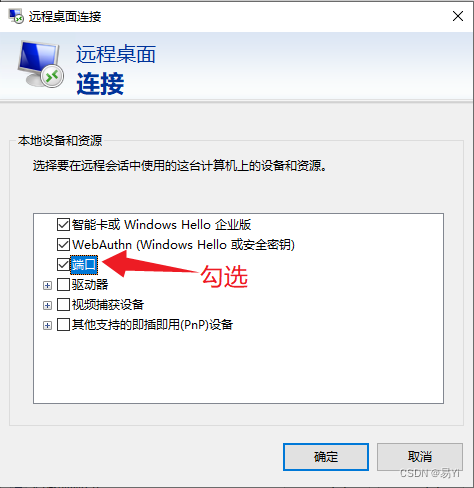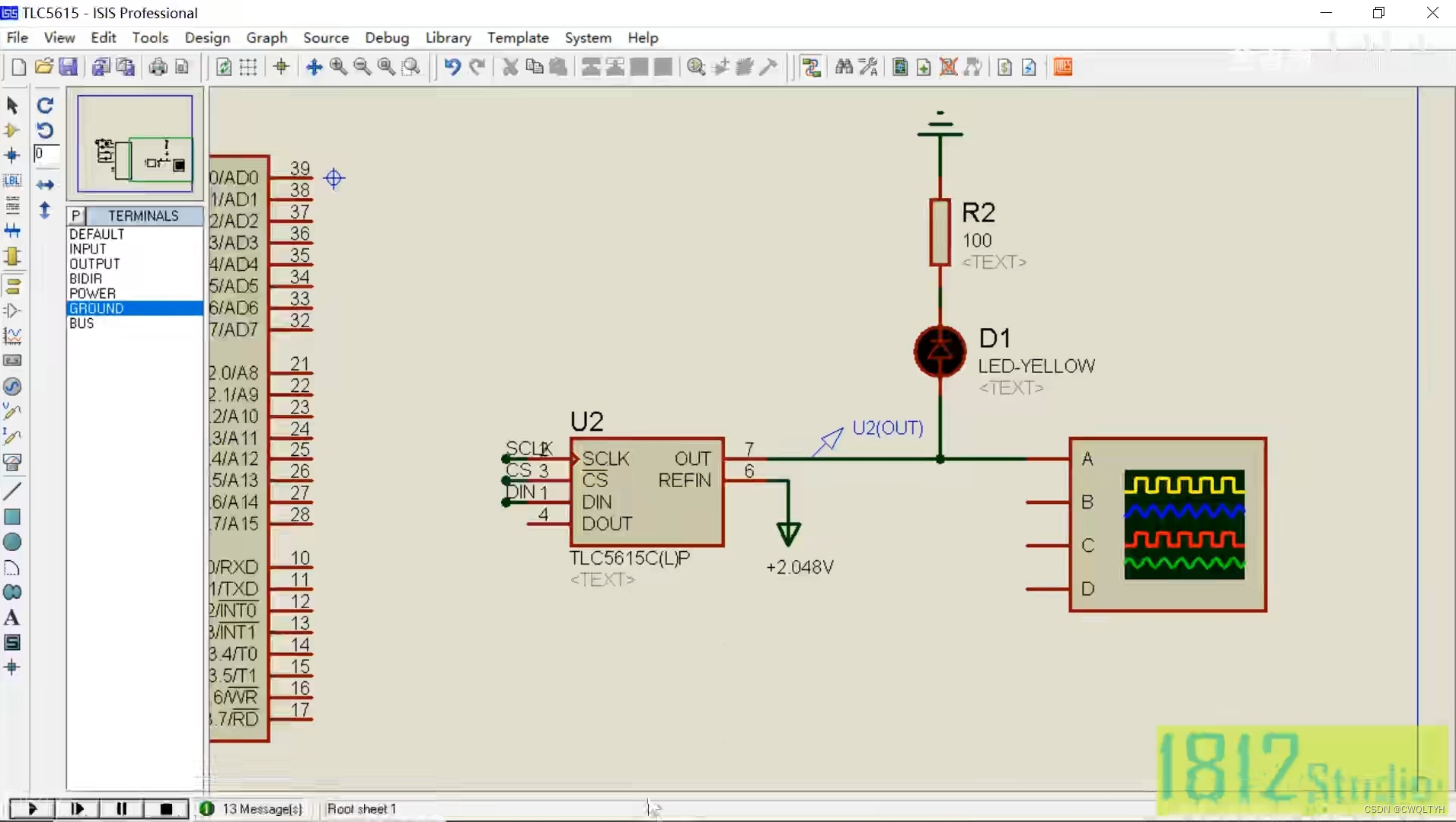本专栏内容为:C++学习专栏,分为初阶和进阶两部分。 通过本专栏的深入学习,你可以了解并掌握C++。
💓博主csdn个人主页:小小unicorn
⏩专栏分类:C++
🚚代码仓库:小小unicorn的代码仓库🚚
🌹🌹🌹关注我带你学习编程知识
STL详解(一)
- string类
- 成员函数(Member functions):
- 元素访问的三种访问形式与迭代器(Iterators)
- 方法一(运算符重载[]访问):
- 方法二(使用迭代器访问):
- 方法三:使用at
- 容量相关:
- 长度(size和length)
- 清理空间(clear)
- 最大长度(max_size)
- 容量(capacity)
- reserve
- resize
- 修改:
- operator+=与operator+ (string)
- 赋值(assgin)
- 修改(insert/erase/replace)
- swap
- 字符串操作:
- find系列
string类
今天要介绍的是STL中的string类,本文将从一下几个模块来讲string类的使用,借助文档C++plusepluse来学习。
首先看一下string的定义,其实string也是个摸版。

可以简单理解string是一个存储字符的一个顺序数组。
成员函数(Member functions):
在文档中,我们可以知道:
string类的默认成员函数有:构造函数,析构函数以及赋值重载函数。

我们先简单用一下:
void test_string1()
{
string s1;
string s2("hello world");
cin >> s1;
cout << s1 << endl;
cout << s2 << endl;
string ret1 = s1 + s1;
cout << ret1 << endl;
string ret2 = s1 + "我来了";
cout << ret2 << endl;
}
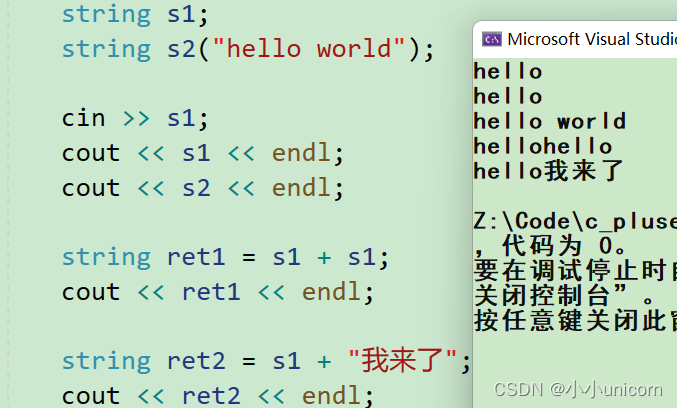
string类实现了多个构造函数的重载,常用的构造函数如下:
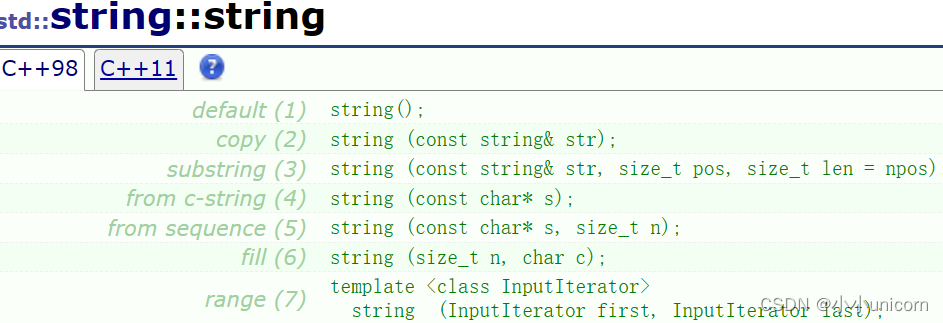
string(); //构造一个空字符串
string(const char* s); //复制s所指的字符序列
string(const char* s, size_t n); //复制s所指字符序列的前n个字符
string(size_t n, char c); //生成n个c字符的字符串
string(const string& str); //生成str的复制品
string(const string& str, size_t pos, size_t len = npos); //复制str中从字符位置pos开始并跨越len个字符的部分
使用示例:
string s1; //构造空字符串
string s2("hello string"); //复制"hello string"
string s3("hello string", 3); //复制"hello string"的前3个字符
string s4(10, 's'); //生成10个's'字符的字符串
string s5(s2); //生成s2的复制品
string s6(s2, 0, 4); //复制s2中从字符位置0开始并跨越4个字符的部分
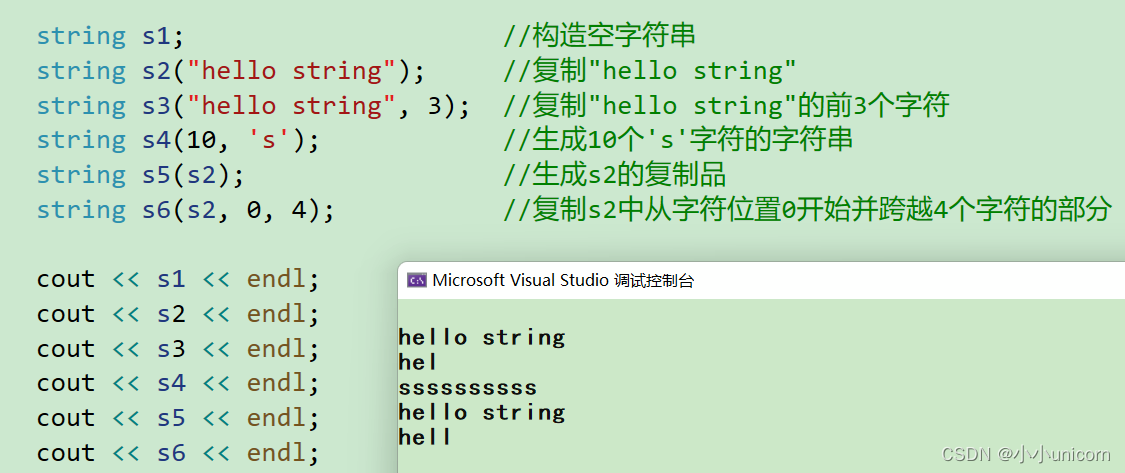
析构函数很简单:

这里就不做过多介绍了。
赋值重载函数:

void test_string5()
{
string s1; //构造空字符串
string s2("hello string"); //复制"hello string"
string s3("hello string", 3); //复制"hello string"的前3个字符
string s4(10, 's'); //生成10个's'字符的字符串
string s5(s2); //生成s2的复制品
string s6(s2, 0, 4); //复制s2中从字符位置0开始并跨越4个字符的部分
cout << s1 << endl;
cout << s2 << endl;
cout << s3 << endl;
cout << s4 << endl;
cout << s5 << endl;
cout << s6 << endl;
s6 = s5;
s4 = "xxx";
s3 = 'y';
cout << s6<<endl;
cout << s4 << endl;
cout << s3 << endl;
}

元素访问的三种访问形式与迭代器(Iterators)
首先我们思考一下,string元素如何访问元素?
这里有三种方法:
方法一(运算符重载[]访问):
在string中,有运算符重载[]来进行对元素的访问:

具体访问形式与数组访问下标一样。
用[]遍历string,进行读写操作
void test_string2()
{
string s1="hello world";
string s2("hello world");
//遍历string
for (size_t i = 0; i < s1.size(); i++)
{
//读
cout << s1[i] ;
}
cout << endl;
//
for (size_t i = 0; i < s1.size(); i++)
{
//写
s1[i]++;
}
cout << s1 << endl;
}
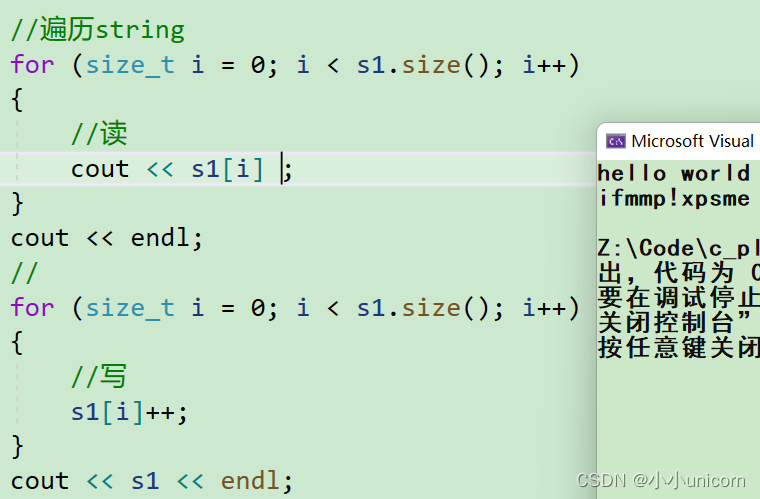
方法二(使用迭代器访问):
先看下面这组示例:
//迭代器
string::iterator it = s1.begin();
while (it != s1.end())
{
//读
cout << *it;
++it;
}
cout << endl;
it = s1.begin();
while (it != s1.end())
{
//写
*it ='a';
++it;
}
cout << endl;
cout << s1<<endl;

我们会发现:我们也能对string进行遍历和修改操作。
那么什么是迭代器呢?
先看看文档中与迭代器相关的函数:

在上面例子中,我们用到了begin和end.
回到正题,什么是迭代器?在这里,我们可以首先将迭代器理解成双指针。

begin指向起始位置,end指向末端位置。所以不难发现,这是一个左闭右开区间,因为end指向的是最后一个元素的下一位置。
那么有人就提出疑问了,为什么遍历的条件是it!=s1.end(),如果换成小于呢?答案是,讲条件换成小于其实也是对的,但是会有局限性。
这是因为,我们的string类存储其实本质也还是个数组,也就是按照顺序存储的,那如果换成链表呢?
我们知道,链表不是顺序存储,是按照节点跟节点相连。

如果此时用<就会出错。这就是我们用!=来作为我们的遍历条件。
其实不仅如此,我们后面介绍的二叉树,图的访问,都会用到迭代器。这也进一步体现了C++的封装。
begin和end介绍完了,那rbegin和rend呢?
顾名思义,就是反着走。begin和end是正向迭代器,而rbegin和rend就是反向迭代器。
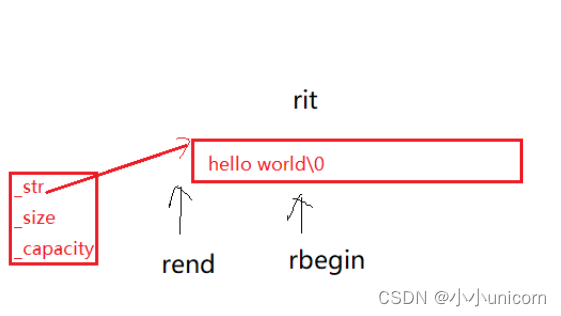
void test_string3()
{
string s1 = "hello world";
string s2("hello world");
//迭代器
string::reverse_iterator it = s1.rbegin();
while (it != s1.rend())
{
//读
cout << *it;
++it;
}
cout << endl;
string::reverse_iterator rit = s1.rbegin();
while (rit != s1.rend())
{
//写
*rit = 'a';
++rit;
}
cout << endl;
cout << s1 << endl;
}

但是呢,还有一个问题,这迭代器这么长,以防写错,我们还可以和auto进行搭配。不要忘了auto可以自动识别类型哦!
void test_string3()
{
string s1 = "hello world";
string s2("hello world");
//迭代器
//
// string::reverse_iterator it = s1.rbegin();
auto it = s1.rbegin();
while (it != s1.rend())
{
//读
cout << *it;
++it;
}
cout << endl;
//string::reverse_iterator rit = s1.rbegin();
auto rit = s1.rbegin();
while (rit != s1.rend())
{
//写
*rit = 'a';
++rit;
}
cout << endl;
cout << s1 << endl;
}

其实不仅如此,遍历的时候我们还可以搭配范围for的用法:
void test_string3()
{
string s1 = "hello world";
string s2("hello world");
//迭代器
//
// string::reverse_iterator it = s1.rbegin();
auto it = s1.rbegin();
//while (it != s1.rend())
//{
// //读
// cout << *it;
// ++it;
//}
for (auto ch : s1)
{
cout << ch;
}
cout << endl;
//string::reverse_iterator rit = s1.rbegin();
auto rit = s1.rbegin();
//while (rit != s1.rend())
//{
// //写
// *rit = 'a';
// ++rit;
//}
for (auto& ch : s1)
{
ch++;
}
cout << endl;
cout << s1 << endl;
}

现在感受到了auto的好用之处了吗?是不是感叹道,auto真香!
但要知道一点,其实范围for的本质其实就是迭代器!编译器编译时会自动替换成迭代器。
然后剩下的cbeg和cend又是什么呢?他们其实是一个const迭代器。
看下面这组示例:
void func(const string& s)
{
//string::const_iterator it = s.begin();
auto it = s.begin();
while (it != s.end())
{
// 不支持写
// *it = 'a';
// 读
cout << *it << " ";
++it;
}
cout << endl;
//string::const_reverse_iterator rit = s.rbegin();
auto rit = s.rbegin();
while (rit != s.rend())
{
cout << *rit << " ";
++rit;
}
cout << endl;
}
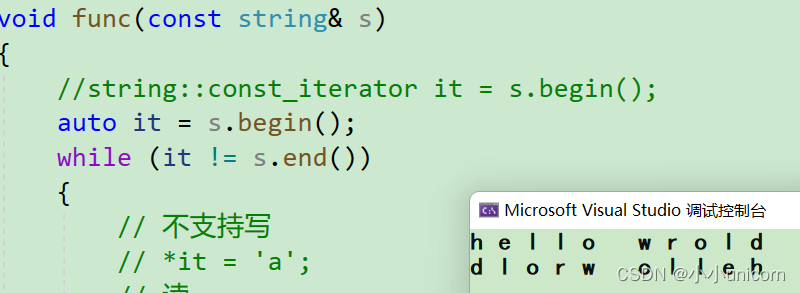
其实发现,我们并没有用到cbegin和cend,这是因为,其实begin和end中就已经包含了cont和const。

不过要注意一点:对于const迭代器来说,只能读不能写。
我们通过介绍元素访问,将迭代器基本上已经了解的差不多了。

总结一下:迭代器我们现在可以就先理解为底层实现其就是双指针,迭代器分了四种,const正向迭代器,非const正向迭代器,const反向迭代器,非const反向迭代器。在使用迭代器时,还可以搭配auto和范围for.还要注意对于const迭代器来说,只能读,不能写。
方法三:使用at

因为at函数也是使用的引用返回,所以我们也可以通过at函数修改对应位置的元素。
而用at访问和方法一中【】访问最大的区别就是:
【】+下标访问会严格检查越界问题,一旦检查到越界问题,就会直接奔溃,而用at访问不会出现奔溃,会抛异常。
void test_string4()
{
string s("CSDN");
for (size_t i = 0; i < s.size(); i++)
{
//at(pos)访问pos位置的元素
cout << s.at(i);
}
cout << endl;
for (size_t i = 0; i < s.size(); i++)
{
//at(pos)访问pos位置的元素,并对其进行修改
s.at(i) = 'x';
}
cout << s << endl; //xxxx
}
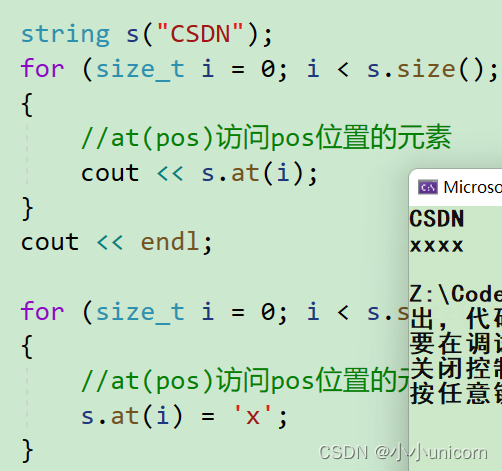
容量相关:
在string类中,与容量相关的有以下这些:
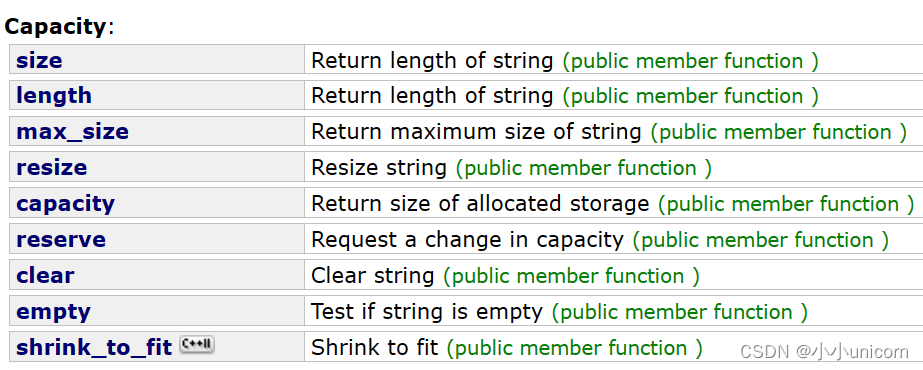
首先来看一下size和length.
长度(size和length)
size和length顾名思义就是求string的长度。
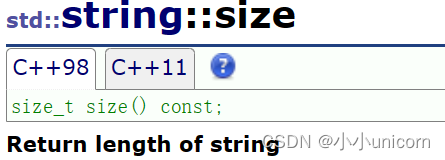
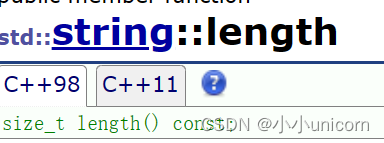
void test_string6()
{
string s1("hello world");
cout << s1.size() << endl;
cout << s1.length() << endl;
}
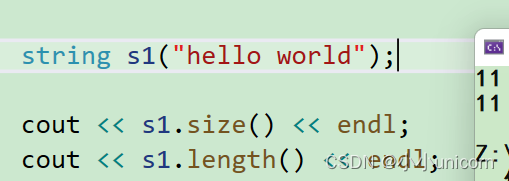
通过结果我们发现,怎么是一样的呢?是的,因为他们其实求的都是长度。也可以说,其实最原始求一个字符串的长度是只有length,但是既然出现了摸版这么好用的东西,与是也就出现了size,为了方便统一。
清理空间(clear)

clear用来清理空间,但释不释放空间呢?我们可以进行测试一下:
void test_string6()
{
string s1("hello world");
cout << s1.size() << endl;
cout << s1.length() << endl;
cout << s1.capacity() << endl;
s1.clear();
cout << s1.capacity() << endl;
s1 += "张三";
cout << s1.size() << endl;
cout << s1.capacity() << endl;
//cout << s1.max_size() << endl;
}
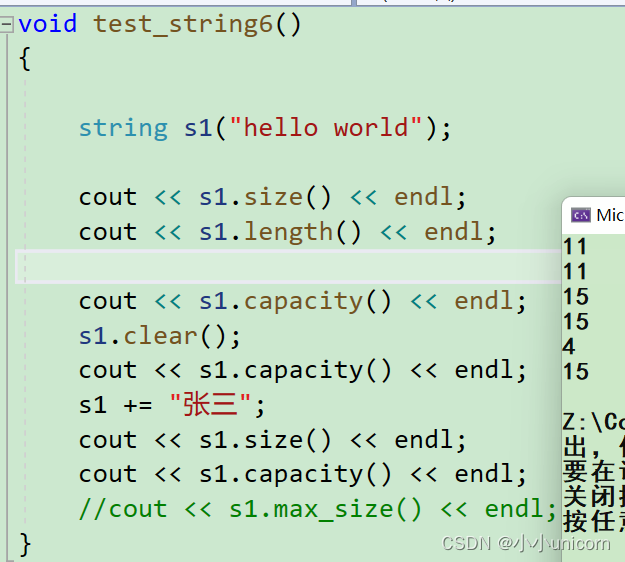
通过测试可以知道,clear只是清理空间,但并不会释放掉空间。因为没有必要需要释放空间,如果对其进行插入,又会开新的空间。我们要知道一点:空间是很廉价的,能合理利用就要合理利用。
最大长度(max_size)

求string的最大长度,这个很少用的到或者基本不用。
容量(capacity)

capacity就是求string的容量,我们可以看一下具体是怎么实现扩容的:
void test_string7()
{
string s;
//s.reserve(100);
size_t old = s.capacity();
cout << "初始" << s.capacity() << endl;
for (size_t i = 0; i < 100; i++)
{
s.push_back('x');
if (s.capacity() != old)
{
cout << "扩容:" << s.capacity() << endl;
old = s.capacity();
}
}
//s.reserve(10);
//cout << s.capacity() << endl;
}

我们在Liunx系统下测试一下:

从结果可以发现,在vs中每次扩容1.5倍左右。而在liunx系统下,会每次扩容2倍。
reserve

要是提前知道空间的大小,我们就可以用reserve提前开好。
void test_string7()
{
string s;
s.reserve(100);
size_t old = s.capacity();
cout << "初始" << s.capacity() << endl;
for (size_t i = 0; i < 100; i++)
{
s.push_back('x');
if (s.capacity() != old)
{
cout << "扩容:" << s.capacity() << endl;
old = s.capacity();
}
}
/*s.reserve(10);
cout << s.capacity() << endl;*/
}

这样的好处就是可以减少扩容,提高效率。
resize

在介绍resize前,先看下面这组示例:
void test_string8()
{
string s1("hello world");
cout << s1 << endl;
cout << s1.size() << endl;
cout << s1.capacity() << endl;
//s1.resize(13);
//s1.resize(13, 'x');
//插入
s1.resize(20, 'x');
cout << s1 << endl;
cout << s1.size() << endl;
cout << s1.capacity() << endl;
//删除
s1.resize(5);
cout << s1 << endl;
cout << s1.size() << endl;
cout << s1.capacity() << endl;
//插入
string s2;
s2.resize(10, '#');
cout << s2 << endl;
cout << s2.size() << endl;
cout << s2.capacity() << endl;
}
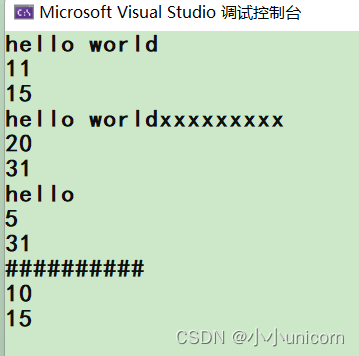
resize具体实现的功能因情况而定:

假设现在原有大小为7,如果传的大小大于了7,会实现自动扩容也就是插入的功能。要是比7小,就相当于删除,有多少删多少。
修改:
在string类中,与修改相关的有以下这些:

operator+=与operator+ (string)


void test_string9()
{
string ss("world");
string s;
s.push_back('#');
s.append("hello");
cout << s << endl;
s += '#';
s += "hello";
s += ss;
cout << s << endl;
string ret1 = ss + '#';
string ret2 = ss + "hello";
cout << ret1 << endl;
cout << ret2 << endl;
}
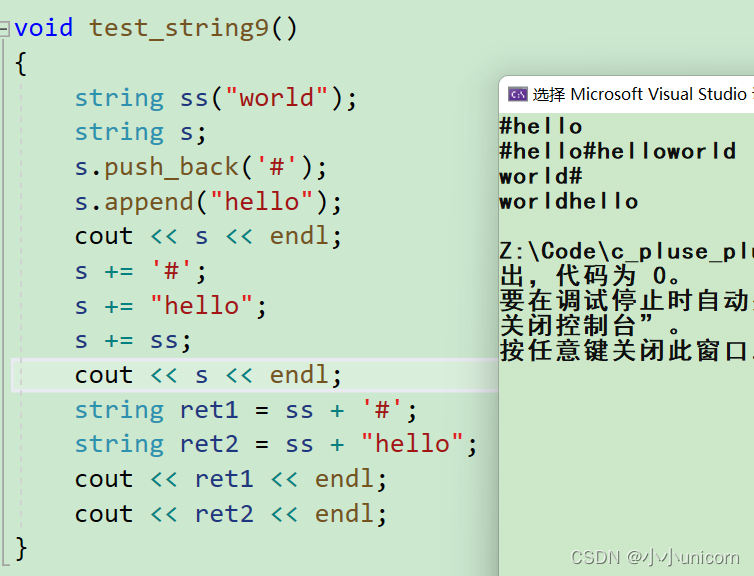
+=或+一个字符串很简单,这里不过多叙述。
注意:能用+的尽量要用+=,+用的是传值返回,拷贝构造花销会很大。

赋值(assgin)
assgin:变相的赋值,很少用到。

示例:
void test_string10()
{
std::string str("xxxxxxx");
std::string base = "The quick brown fox jumps over a lazy dog.";
str.assign(base);
std::cout << str << '\n';
str.assign(base, 5, 10);
std::cout << str << '\n';
}
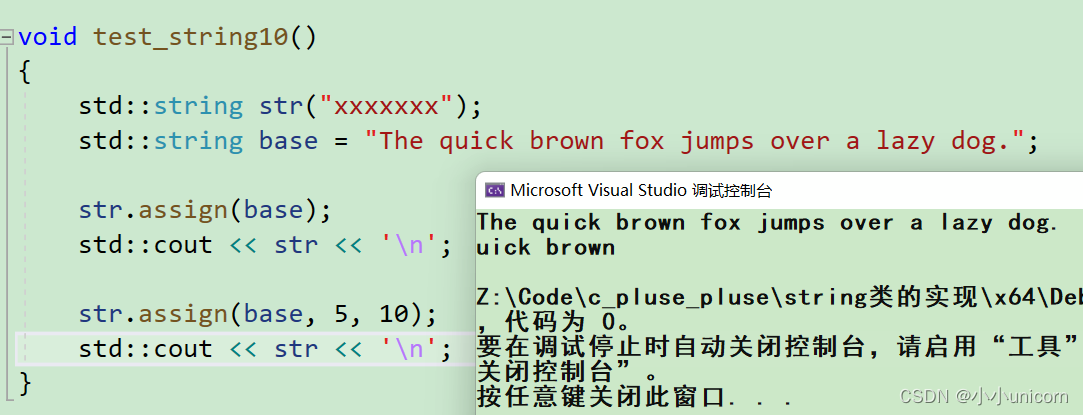
修改(insert/erase/replace)

insert:在某个位置插入。

erase:删除某个位置

replace:将某个位置的值替换为…
示例:
void test_string11()
{
// insert/erase/repalce能不用就尽量不用,因为他们都涉及挪动数据,效率不高
// 接口设计复杂繁多,需要时查一下文档即可
std::string str("hello world");
str.insert(0, 1, 'x');
str.insert(str.begin(), 'x');
cout << str << endl;
str.erase(5);
cout << str << endl;
std::string s1("hello world");
s1.replace(5, 3, "%%20");
cout << s1 << endl;
}

虽然感觉实现了很多功能,但是还是要注意:
insert/erase/repalce能不用就尽量不用,因为他们都涉及挪动数据,效率不高
接口设计复杂繁多,需要时查一下文档即可。
接下来思考一下:
现在给定一个字符串,要将这个字符串中的空格全都换成%20,应该怎么处理呢?
"The quick brown fox jumps over a lazy dog."
我们可以用空间换时间的方法来解决这个问题:
void test_string12()
{
// 空格替换为20%
std::string s2("The quick brown fox jumps over a lazy dog.");
string s3;
for (auto ch : s2)
{
if (ch != ' ')
{
s3 += ch;
}
else
{
s3 += "20%";
}
}
cout << s3 << endl;
}
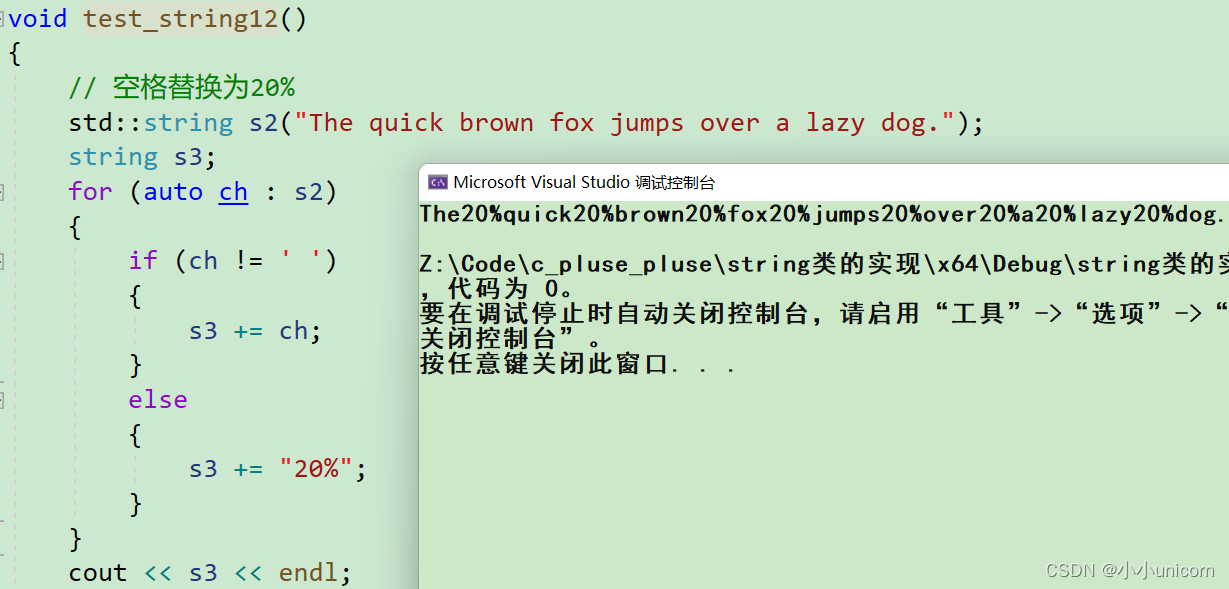
但我们输出的是s3,如果我就想让原字符串得到处理呢?
那么我们就可以用swqp函数,将s2与s3进行交换。
swap
我们将s2和s3进行交换:
swap(s2, s3);
但是我们这样直接交换,用的是算法库函数里面的swap交换函数。


但是用库里面的函数,代价开大了,会进行3次深拷贝。

为了防止这个问题,string有一个专门的swap函数:

s2.swap(s3);
这里的swap就只是将s2和s3的地址进行了交换。

我们可以将地址打印出来,测试一下:
printf("s2:%p\n", s2.c_str());
printf("s3:%p\n", s3.c_str());
//swap(s2, s3);
s2.swap(s3);
printf("s2:%p\n", s2.c_str());
printf("s3:%p\n", s3.c_str());

确实只交换了地址。
那么库函数里的swap呢?
printf("s2:%p\n", s2.c_str());
printf("s3:%p\n", s3.c_str());
swap(s2, s3);
//s2.swap(s3);
printf("s2:%p\n", s2.c_str());
printf("s3:%p\n", s3.c_str());

结果发现:这里怎么也只是交换了地址,这又是为什么呢?

这是因为,在string的全员函数中,还有一个swap的全局函数:

而这个全局的swao函数就是为了防止调到算法库里面的swap函数,换句话说,string中基本上永远调不到算法库里面的swap函数。
现在反观STL,就会发现他的厉害之处。
字符串操作:
在string类中,与字符串操作相关的有以下这些:
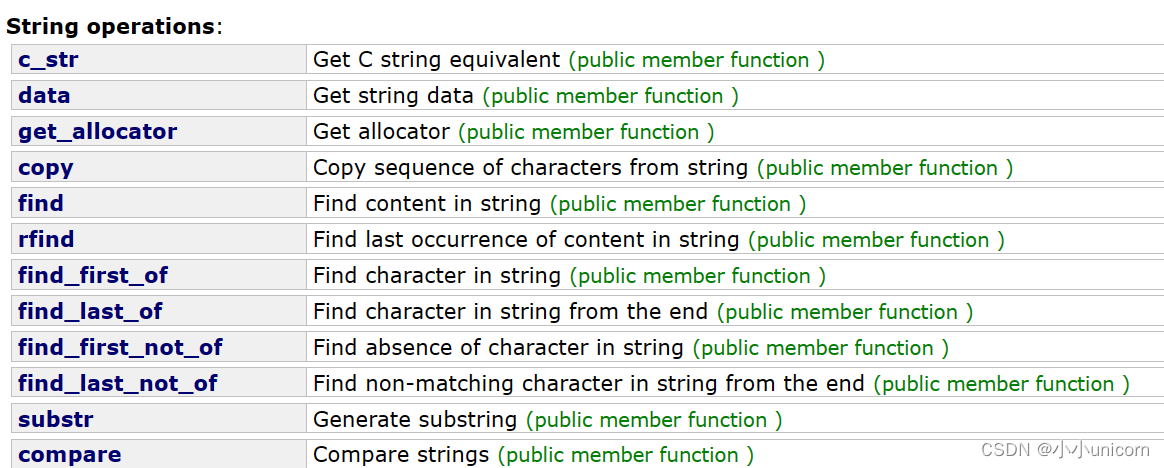
这里我们重点将find系列:
find系列
find系列有以下这些:

find:查找

rfind:从后往前找:

subster:获取子串操作

示例:
void test_string13()
{
string s1("test.cpp.tar.zip");
//size_t i = s1.find('.');
size_t i = s1.rfind('.');
string s2 = s1.substr(i);
cout << s2 << endl;
}
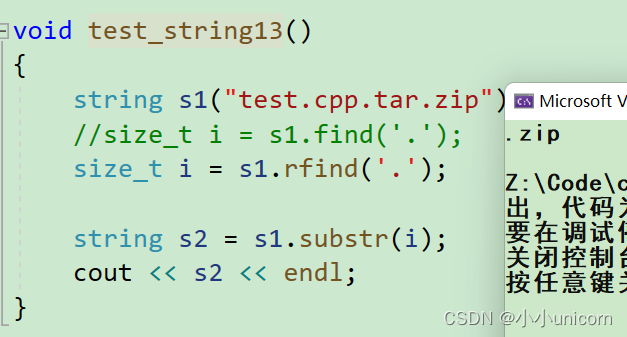
我们可以做一个小练习:
给定一个网址,将这个网址按照协议,域名,资源名分割开来:
void test_string13()
{
string s1("test.cpp.tar.zip");
//size_t i = s1.find('.');
size_t i = s1.rfind('.');
string s2 = s1.substr(i);
cout << s2 << endl;
string s3("https://legacy.cplusplus.com/reference/string/string/substr/");
string sub1, sub2, sub3;
// 协议
size_t i1 = s3.find(':');
if (i1 != string::npos)
{
sub1 = s3.substr(0, i1);
}
else
cout << "没有找到协议" << endl;
// 域名
size_t i2 = s3.find('/', i1 + 3);
if (i2 != string::npos)
{
sub2 = s3.substr(i1 + 3, i2 - (i1 + 3));
}
else
cout << "没有找到域名" << endl;
// 资源名
sub3 = s3.substr(i2 + 1);
cout << "协议为:" << endl;
cout << sub1 << endl;
cout << "域名为:" << endl;
cout << sub2 << endl;
cout << "资源名为:" << endl;
cout << sub3 << endl;
}

难点就是如何控制下标的位置:
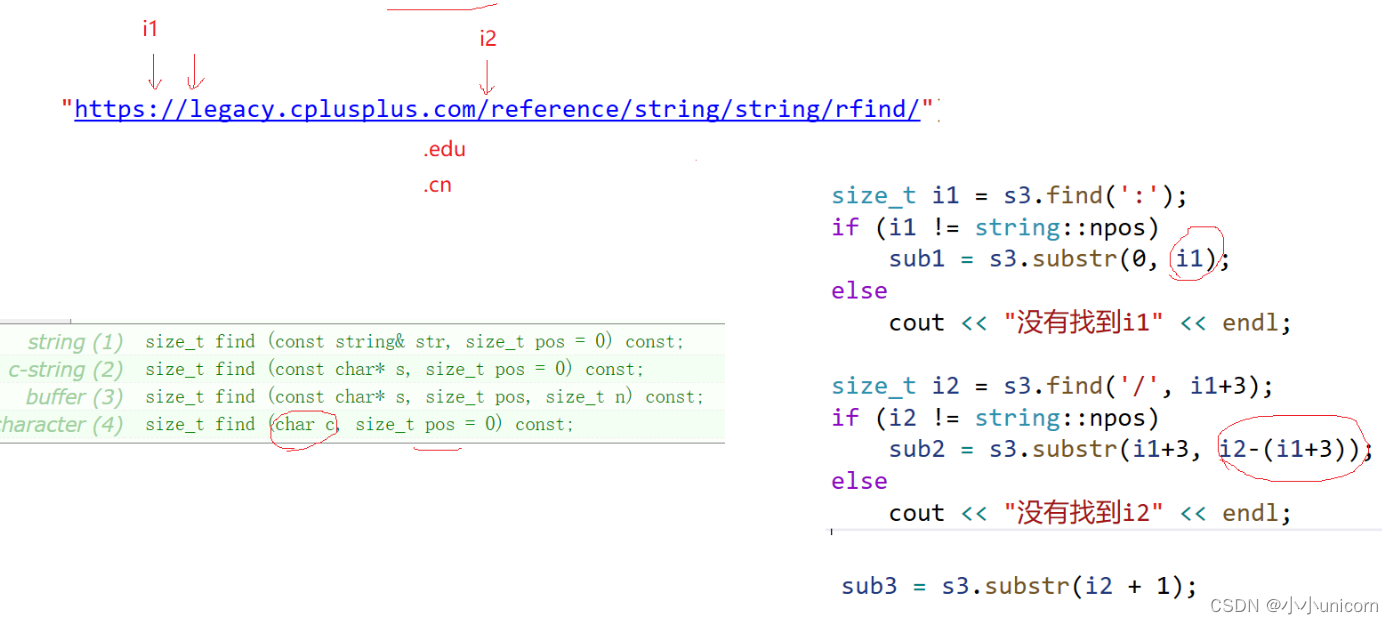
剩下的这些,用的很少:

先看一下示例:
void test_string14()
{
/*std::string str("Please, replace the vowels in this sentence by asterisks.");
std::size_t found = str.find_first_not_of("abc");
while (found != std::string::npos)
{
str[found] = '*';
found = str.find_first_not_of("abcdefg", found + 1);
}
std::cout << str << '\n';*/
std::string str("Please, replace the vowels in this sentence by asterisks.");
std::size_t found = str.find_first_of("abcd");
while (found != std::string::npos)
{
str[found] = '*';
found = str.find_first_of("abcd", found + 1);
}
std::cout << str << '\n';
}

find_first_of:可以看到,这里的用处是将满足条件的全部找出来。
void test_string14()
{
std::string str("Please, replace the vowels in this sentence by asterisks.");
std::size_t found = str.find_first_not_of("abc");
while (found != std::string::npos)
{
str[found] = '*';
found = str.find_first_not_of("abcdefg", found + 1);
}
std::cout << str << '\n';
/*std::string str("Please, replace the vowels in this sentence by asterisks.");
std::size_t found = str.find_first_of("abcd");
while (found != std::string::npos)
{
str[found] = '*';
found = str.find_first_of("abcd", found + 1);
}
std::cout << str << '\n';*/
}

find_first_not_of:而这就是取反操作,将满足条件之外的所有元素全部找出来。
